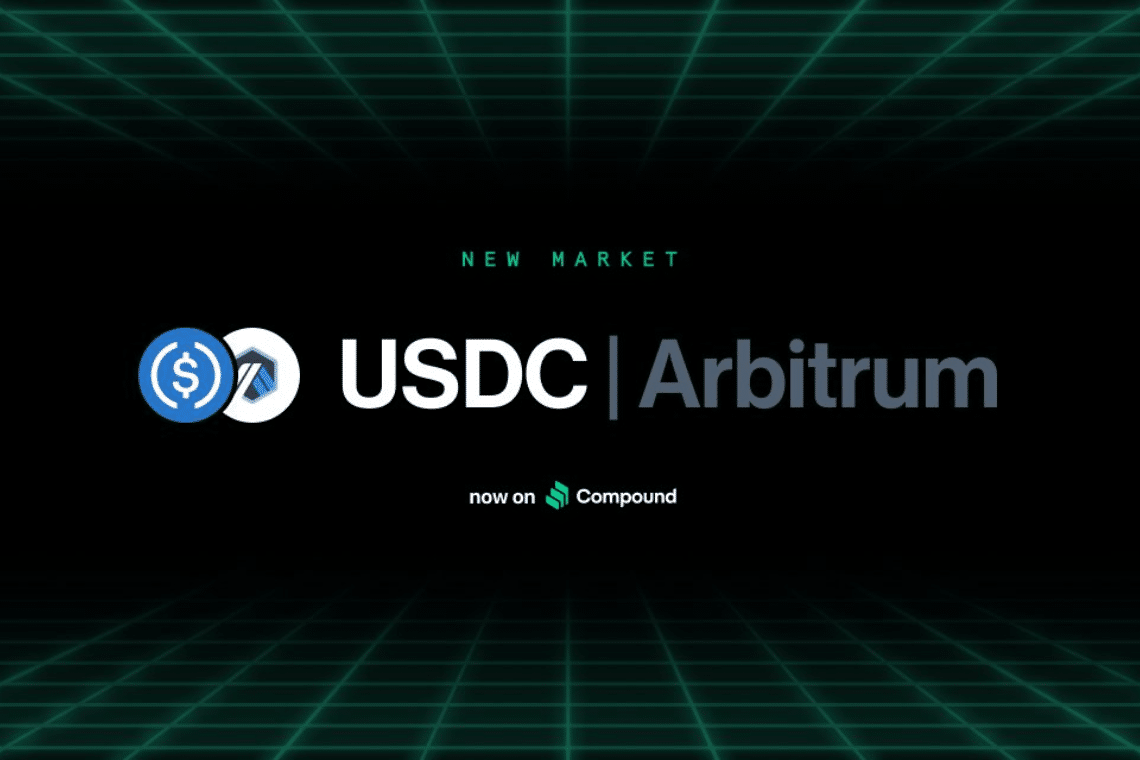Crypto news: Compound Finance has announced that it will expand onto Arbitrum, L2 of Ethereum, with a clear intent in implementing its services in DeFi.
Below are all the details.
Compound Finance on Arbitrum: what does it mean?
As anticipated, Compound Finance announced that it is implementing its latest iteration on the popular Arbitrum scaling solution.
As a result, lending and borrowing inactive cryptocurrencies is becoming cheaper.
Compound III is live on @arbitrum!
— Compound Labs (@compoundfinance) May 16, 2023
You can now use ARB, GMX, WETH, and WBTC as collateral to borrow USDC on Arbitrum.
To view the new market, select Arbitrum from the market selector in the Compound interface or click the link below: https://t.co/uzVunF4qBT pic.twitter.com/DuBUqzpHWl
Compound, which is one of the original decentralized finance (DeFi) products, allows users to lend and borrow various cryptocurrencies. The platform was also one of the first to experiment with so-called yield farming, distributing its native COMP token to platform users in 2020.
The token currently trades at $34.7. Arbitrum, on the other hand, is the industry’s largest layer-2 scaling solution by total value locked (TVL), per data from L2 Beat.
Compared to other popular Ethereum scaling solutions, such as Optimism or zkSync, Arbitrum is superior with as much as $5.8 billion. However, Compound’s implementation on Arbitrum is limited to a few cryptocurrencies, such as Ethereum (ETH), Arbitrum, Wrapped Bitcoin (WBTC), and GMX, the token that powers the decentralized exchange of the same name.
That’s because the latest iteration of the project, called V3, is optimized to manage risk by reducing the amount of long-tail cryptographic resources that can be lent and borrowed.
Ethereum Layer-2 solutions: rollup and zk-rollup
In addition, it is worth noting that this year has turned into a ‘layer-2 season’ of sorts, given the launch of various governance tokens and the first instance of zero-knowledge-based rollup solutions entering the scene.
Compared to ‘optimistic’ rollup solutions, such as those offered by Arbitrum and Optimism, zk-rollups leverage a much more complex cryptographic bit. Members of this niche market include Starknet, Polygon’s zkEVM, and zkSync.
In addition, the collective TVL for these three projects is $320 million. Both solutions leverage rollups, which bundle transactions from Ethereum‘s core network, hence the term layer-2, and then convert those transactions in batches into a small data chunk.
This smaller chunk of data, called evidence, is what Ethereum ultimately validates. In this way, the core network remains relatively uncongested, keeping gas prices on the network low.
What is yield farming and how does it work?
Yield farming, pioneered by Compound, is normally done using ERC-20 tokens on Ethereum, with rewards being a form of ERC-20 token.
Almost all current yield farming transactions take place in the Ethereum ecosystem, although there is no certainty that this will remain the same in the future. In any case, the first step in yield farming involves adding funds to a liquidity pool, which are essentially smart contracts that contain funds.
These pools feed a market in which users can trade, borrow, or lend tokens. After adding funds to a pool, one is officially a liquidity provider.
In exchange for locking funds in the pool, you are rewarded with fees generated by the underlying DeFi platform. Note that investing in ETH itself does not count as yield farming.
Instead, lending ETH on a decentralized non-custodial money market protocol such as Aave, then receiving a reward, is for all intents and purposes yield farming.
The same reward tokens can also be deposited into liquidity pools, and it is common practice for people to move their funds between different protocols to chase higher returns.
Not surprisingly, yield farmers often have a lot of experience with the Ethereum network and its technical aspects and move their funds across different DeFi platforms to get the best returns.
Finally, those who provide liquidity are also rewarded based on the amount of liquidity provided, so those who reap huge rewards have correspondingly huge amounts of capital behind them.
 en.cryptonomist.ch
en.cryptonomist.ch
